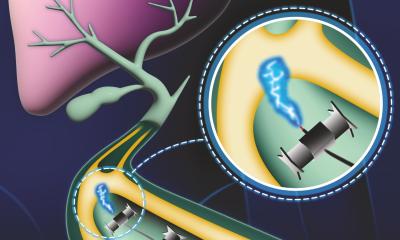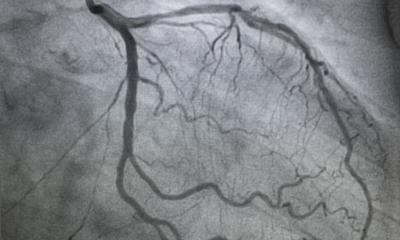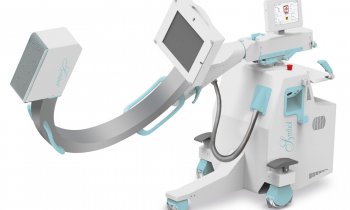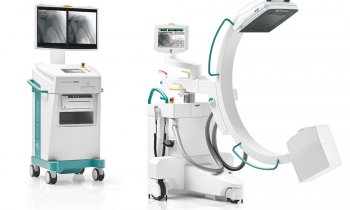World's first robot-assisted vascular surgery for aneurysm
London, UK - A Hansen Sensei* robot has been used to perform vascular surgery on a 78-year-old patient for an aneurysm that would have been thought too high-risk for conventional surgery.
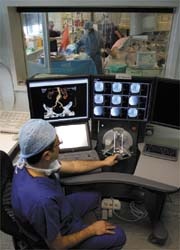
Shorter procedure time, reduced blood vessel wall damage and minimised staff exposure
to the ionising radiation
During the operation a robotic catheter was manipulated by the surgeon at a console outside the operating theatre, using a steerable tip through the blood vessels. Viewing the blood vessels onscreen, a stent was accurately fitted in the aneurysm. Blood then flowed through the stent rather than through the aneurysm, reducing the risk of rupture.
This procedure with a stent is an advanced type of minimally invasive surgery (MIS) which offers all the advantages over conventional surgery as other MIS procedures: surgical incision, minimal blood loss, shorter hospital stay and quicker recovery. However, the robot takes this process a step further; it can potentially offer patients an even shorter procedure time and reduced damage to the blood vessel wall as well as minimising staff exposure to the ionising radiation in theatre, surgeons report. ‘The Sensei robot has the potential to treat extremely complex aneurysm cases that have been considered inoperable until now – reducing the risk of death by rupture.’
The operation took place at St Mary’s Hospital in Paddington, London, which is part of the Imperial College Healthcare NHS Trust. Professor Nick Cheshire, Consultant Surgeon and Director of Imperial’s Circulation and Renal Sciences Group, said: ‘Using this robotic technology will take us closer to our goal of treating every vascular patient with minimally invasive endovascular techniques to improve patient outcomes. These technologies are proving to be safer and more cost effective than open surgery and this project is a perfect example of how our Trust, as the first Academic Health Science Centre in the UK, has literally taken research from the bench to the bedside.’
Annually, 5,000 people in the UK die from abdominal aortic aneurysms, which occur in 7% of men over the age of 60. At Imperial College Healthcare NHS Trust 60% of patients receive endovascular repair with a stent compared to a national average of 20%. With the new robot the Trust hopes to be able to provide this treatment for up to 100% of cases.
Celia Riga, Vascular Research Fellow, said: ‘The combination of innovative technology and clinical excellence within the Trust has enabled us to translate cutting edge research into practice.’
The Vascular Unit at St Mary’s Hospital, part of Imperial College Healthcare Trust, is a leading European centre for endovascular treatment with the largest number of endovascular thoraco-abdominal aneurysm repairs worldwide. The Imperial College Endovascular Group has undertaken prize winning research into vascular robotics. The Group won the 1st prize (scientific session) from the British Society of Endovascular Therapy in July 2008 (Riga CV, Bicknell CD, Hamady M, Cheshire NJW). A similar robot to the Sensei is being used by the Trust to treat arrhythmias in cardiology patients.
* Robot details: www.hansenmedical.com
01.09.2008



